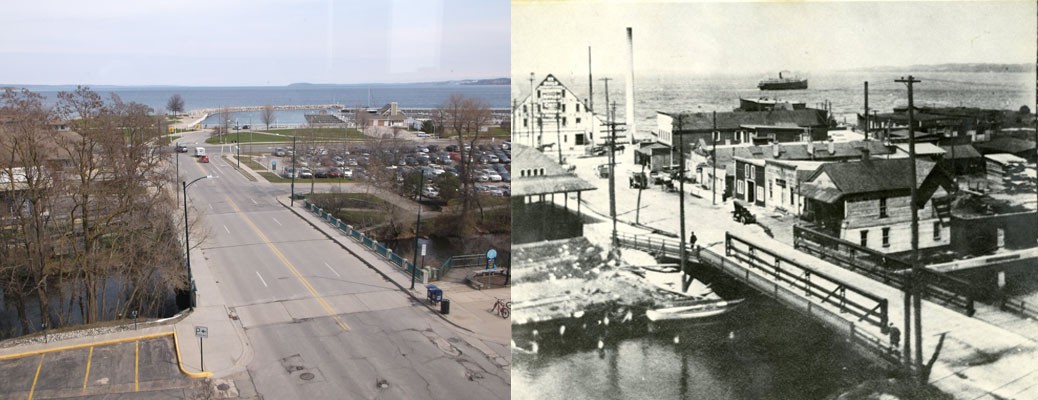
Taken from third floor of the Fifth Third Bank building (formerly, the Traverse City State Bank), two photographs taken more than a hundred years apart tell us about the dramatic changes Traverse City has experienced with regard to its water front. The older picture shows a waterfront dominated by industry and the railroads. The original Morgan canning plant, looking like an A-frame, occupies space at the very end of Union Street. The railroad station stands to the left, tracks running along the Bay in either direction. Ramshackle frame stores line the east side of Union, north of the northern-most bridge over the Boardman River.

The recent picture startles us with its emptiness: no railroad station, no manufacturing plants, no railroad tracks. Open space and parking lots take their places, along with an expressway (Grandview Parkway), and a marina, with slips unoccupied on this early spring day.
Suitably, the Visitors Center replaces the train station, a change symbolic of how the Bay has come to be seen. No longer was it regarded as a place to load and unload the stuff of industry. Instead, it became a place to appreciate natural beauty in all four seasons. But the capitulation of space to provide for the needs of automobiles poses a contradiction: Can the noise and fumes of cars coexist with the fragile beauty of the Bay? City residents hold starkly different opinions.

